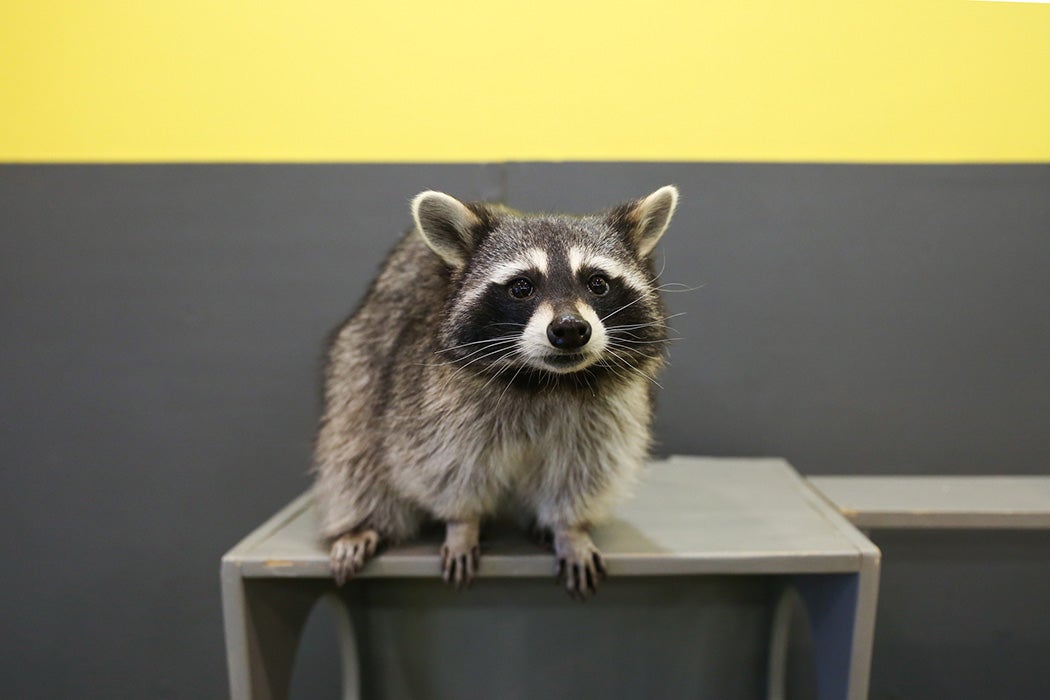By the middle of the twentieth century, psychologists were putting rats through myriad experiments, trying to understand how the mind worked. But earlier in the century, some thought that raccoons held the key to understanding intelligence.
Historian Michael Pettit argues that the rejection of raccoons as test subjects was a deliberate “disciplinary choice” in the history of psychology. This choice was due to important shifts in psychological theory and methods, and it may have influenced decades of research.
Pettit explains that around the turn of the century, Darwinism generated interest in finding the roots of human intelligence. Psychologists began experimenting on a variety of animals, and raccoons in particular seemed promising.
People had long considered raccoons to be intelligent. Indigenous American folklore portrayed the raccoon as a “deceptive and cunning trickster figure,” writes Pettit. In colonial America, people often kept raccoons as pets. Their place in American domestic life persisted into the twentieth century, when President Calvin Coolidge kept a pet raccoon named Rebecca in the White House.
While others spent time hunting raccoons, Pettit points out that pretty much everyone agreed that they possessed “cunning, mischief and curiosity, nurtured by an acute sense of touch.”
In 1907, two psychologists published studies about raccoon intelligence, including Lawrence W. Cole. Based in Oklahoma, Cole conducted “puzzle box” experiments, which involved starving animals and observing their attempts to escape confinement. But Cole’s research also involved his observations of raccoon behavior at home, where, as Pettit puts it, “these scientific objects partially lived the lives of pets.” Cole’s research emphasized curiosity and touch, and convinced some psychologists “that animals may possess minds.” But around this time, behaviorism was emerging.
Behaviorists held that animal behavior was largely a function of conditioning, and they favored a tightly controlled laboratory setting. Cole’s research on raccoons was problematic to them, partly because of his relationship with the animals.
Around this time, Walter S. Hunter began research at the University of Chicago. He ran experiments testing the ability to maintain an association between a light bulb and food after a delay. His test subjects included rats, dogs, raccoons, and children.
The raccoons performed almost as well as the children, but Hunter’s interpretation diverged from Cole’s. Rather than seeing a mind at work, Hunter simply saw a complex sensory response. Cole pushed back on Hunter’s methods, explains Pettit, expressing concern that Hunter was creating “a laboratory psychology that could never travel outside such spaces.”
Weekly Newsletter
But Cole and his raccoons lost relevance as behaviorism became dominant. Pettit emphasizes that the raccoon existed in various “borderlands,” including between lab and field science, and this contributed to exclusion. In tightly controlled spaces, researchers struggled with the escape-artist raccoons. Rats and pigeons were easier to manage in large numbers.
As the raccoon faded from the lab, so did the idea that curiosity and touch contributed to learning. “The abandonment of the raccoon as a model was symptomatic of the neglect of these aspects of learning,” Pettit writes, “of how behaviourism produced ignorance about them.”







